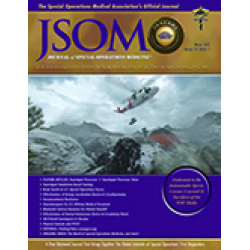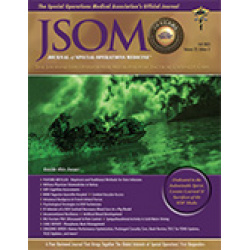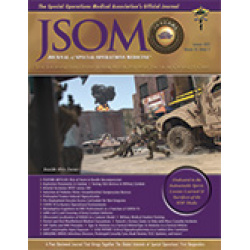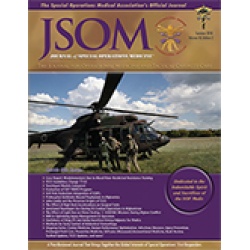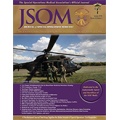Latest Products
Optimizing Tactical Medical Performance: The Effect of Light Hue on Vision Testing
Van Buren JP, Wake J, McLaughlin J, LaPorta AJ, Enzenauer RW, Calvano CJ 18(2). 75 - 78 (Journal Article)
Background: Red and blue are the historical tactical lighting hues of choice to ensure light discipline and to preserve dark adaptation. As yet, no scientifically ideal hue for use in Special Operations medicine has been identified. We propose red/green polychromatic light as a superior choice that preserves visual function for tactical medical tasks in austere settings. Methods: Thirty participants were enrolled in this institutional review board-approved study. Participants completed four vision tasks in low-light settings under various lighting conditions. The Pelli-Robson Near Contrast Sensitivity test (PR), tumbling E visual acuity test, Farnsworth D-15 color-vision test (FD15), and pseudoisochromatic plate (PiP) testing was performed under white, green, or red light illumination and also red/green and red/green/yellow lights. PR and tumbling E tests were performed using blue and blue/red lights. Results: The test results for each light were compared against a white-light standard. Contrast sensitivity as measured by PR testing showed no statistical difference when white light was used compared with red/green or red/green/yellow light, and the differences between red, green, blue, and blue/red all were statistically different from when white light was used. When measuring visual acuity, blue light was the only color for which there was a statistically significant decrease in visual acuity in comparison with white. There was no reduction in visual acuity with any other lights compared with white. Performance on FD15 testing with all single-hue and multihue lights was significantly worse than with white light for measuring color-vision perception. Color discrimination as measured by PiP testing showed red and green light was significantly worse than with white light, whereas test results when green/red and green/red/yellow lights were used were not statistically different from white. Conclusion: Red/Green/yellow and red/green were superior light sources and performance results only were worse than white light on FD15 testing.


 Español
Español 